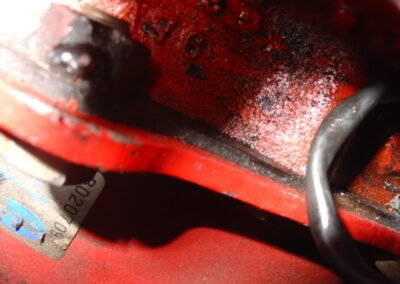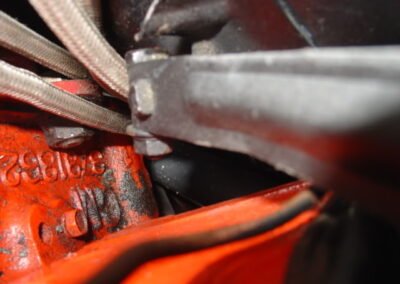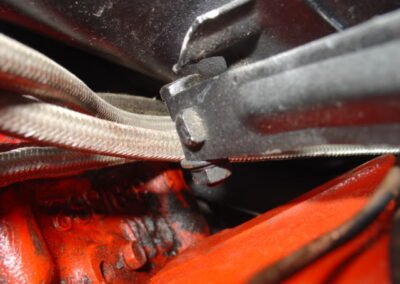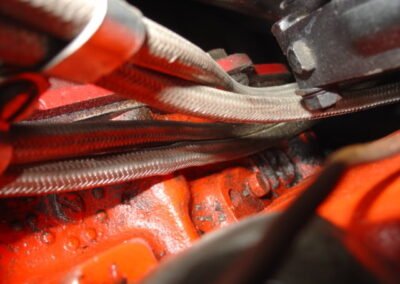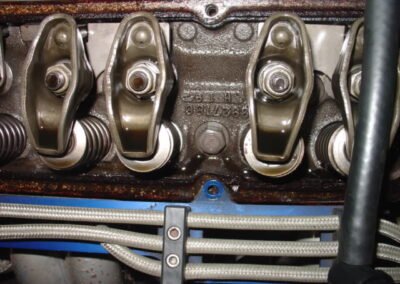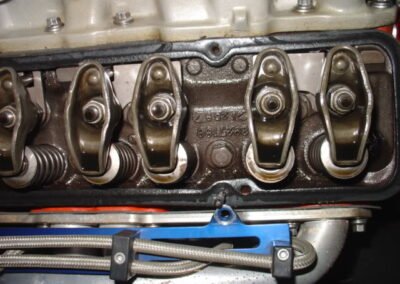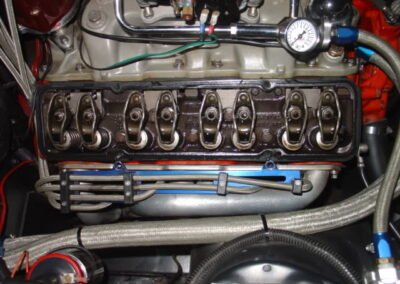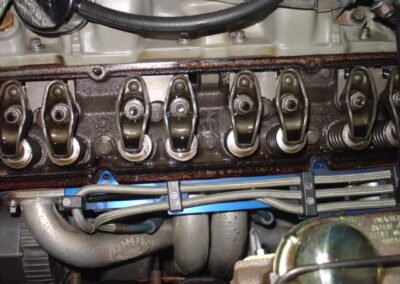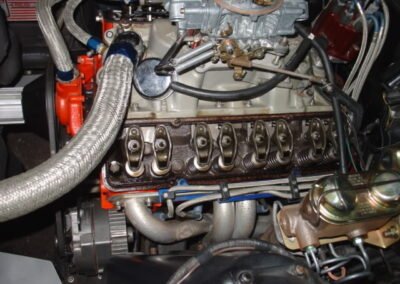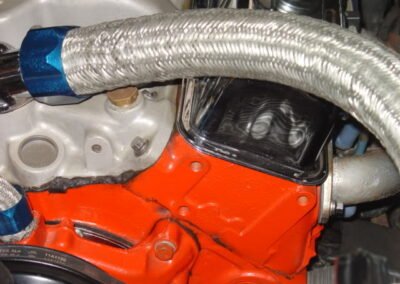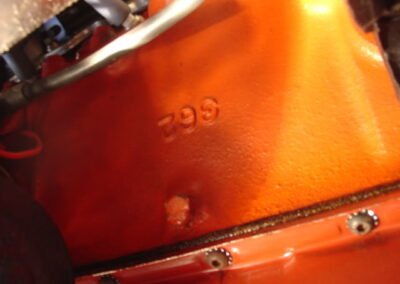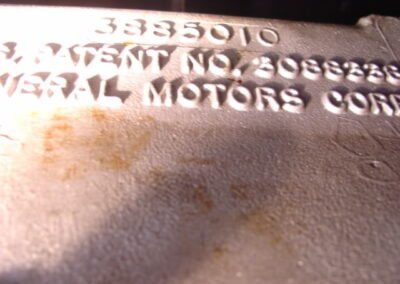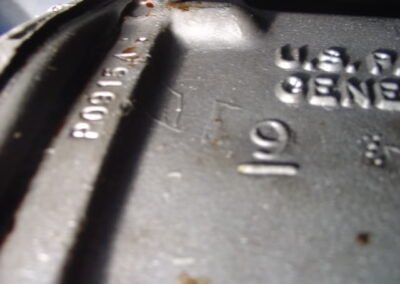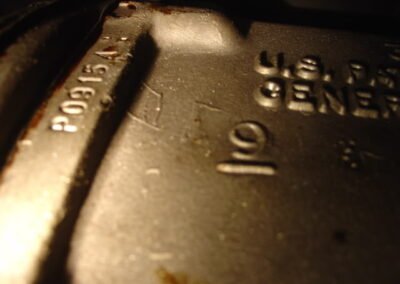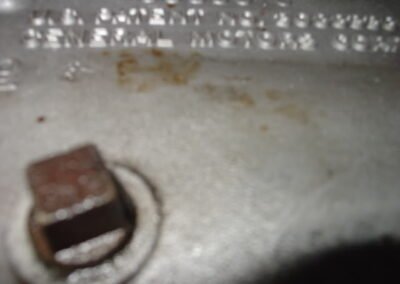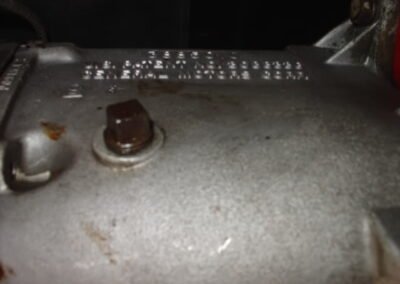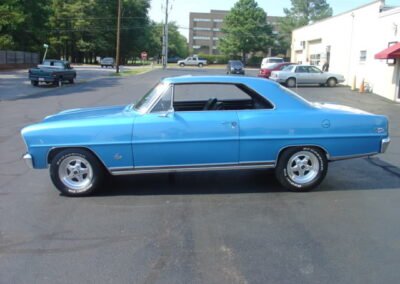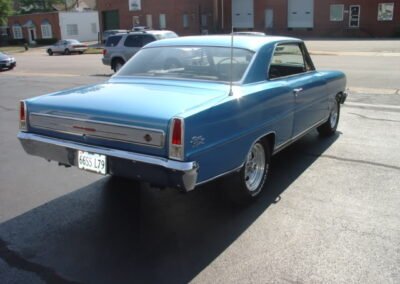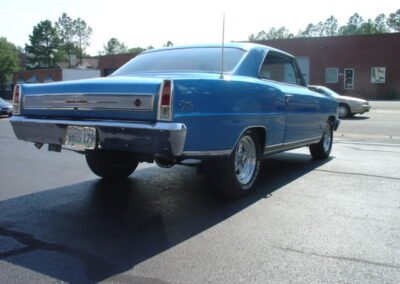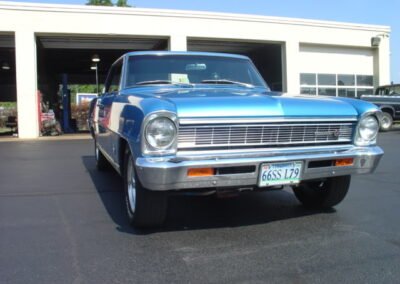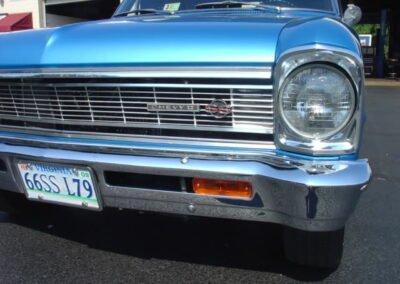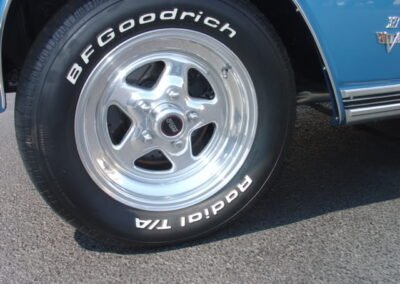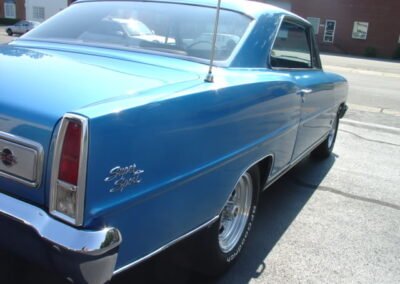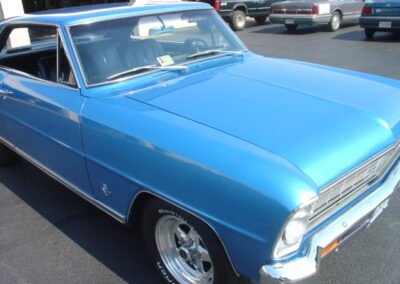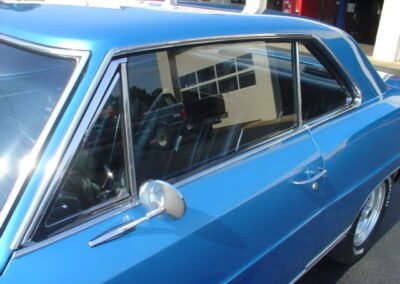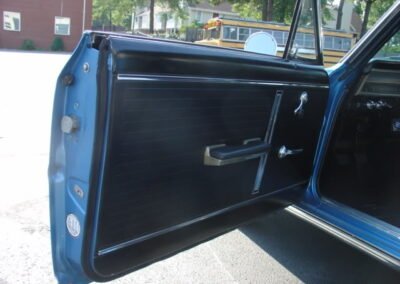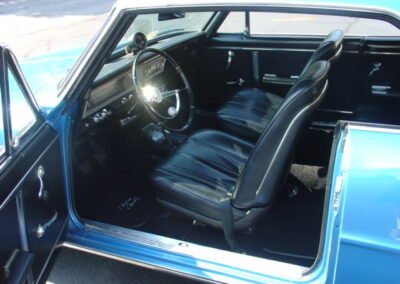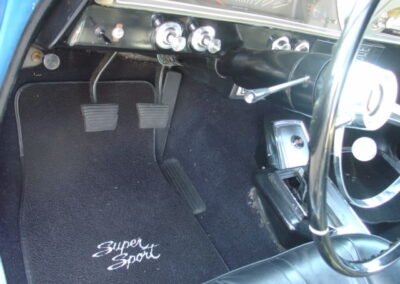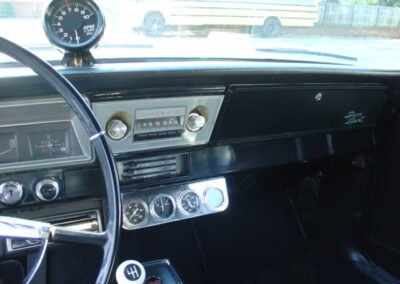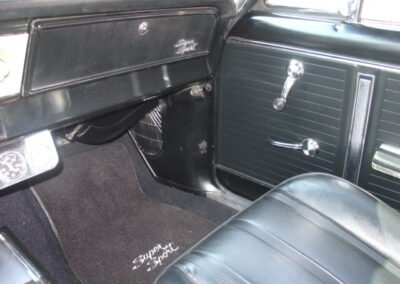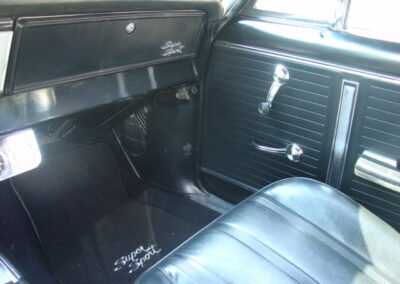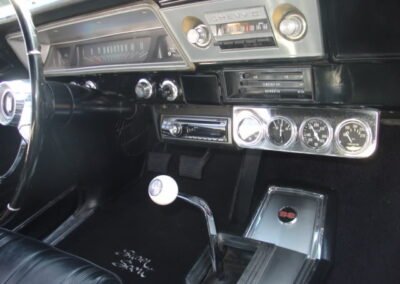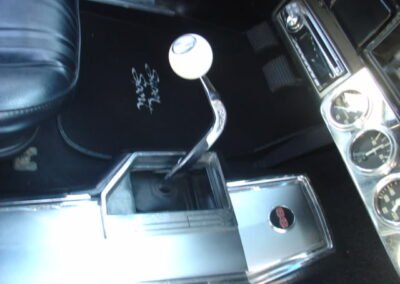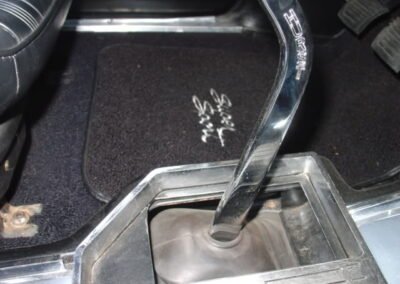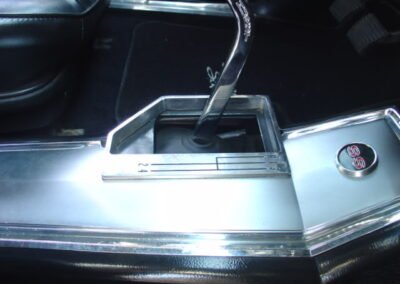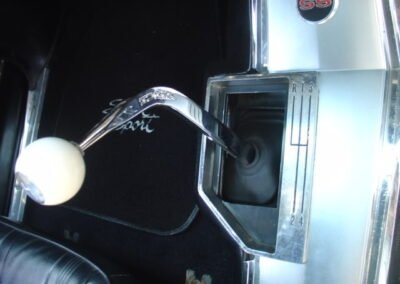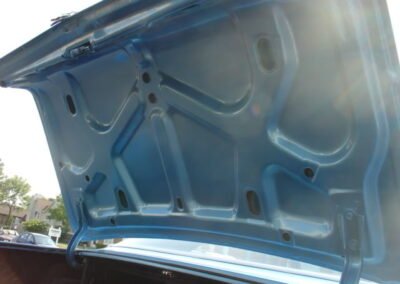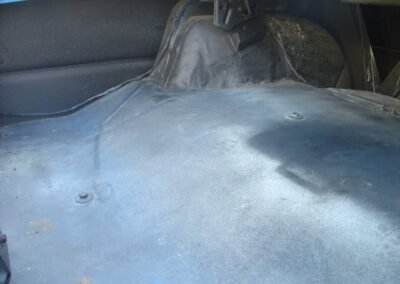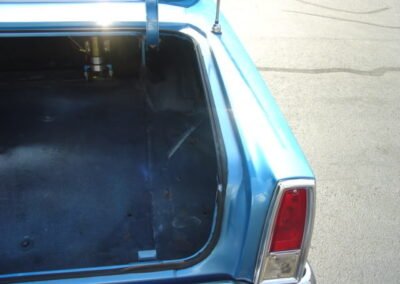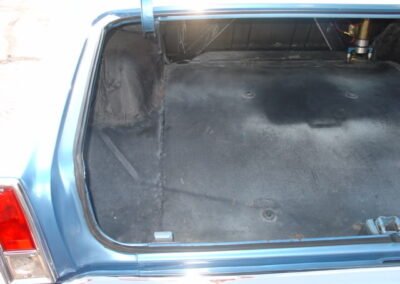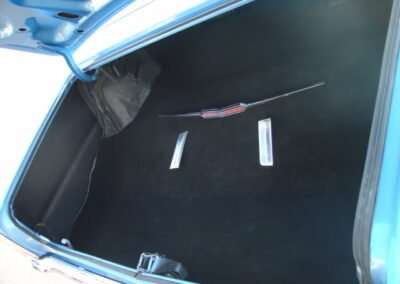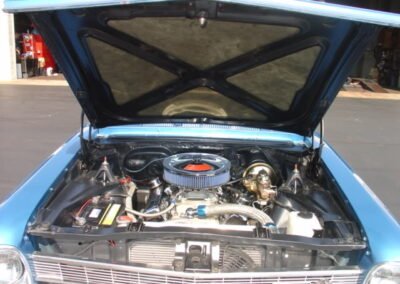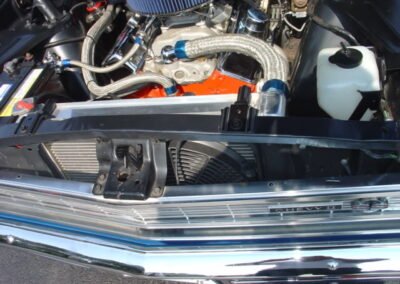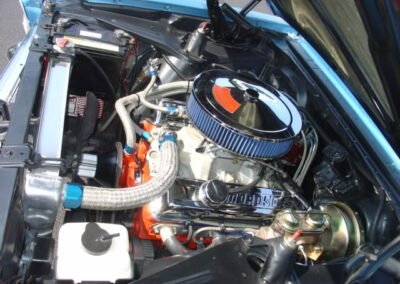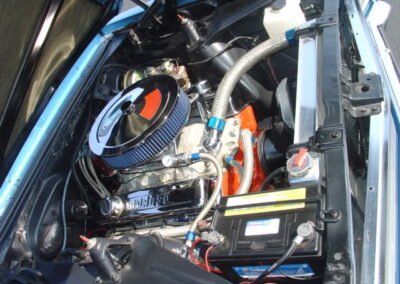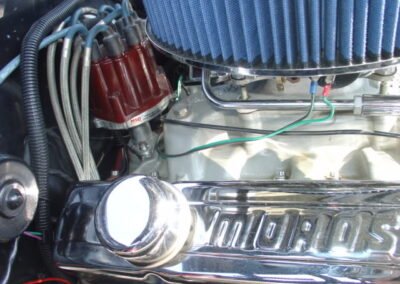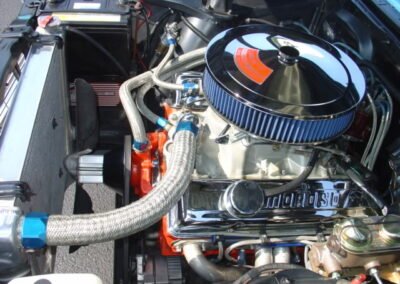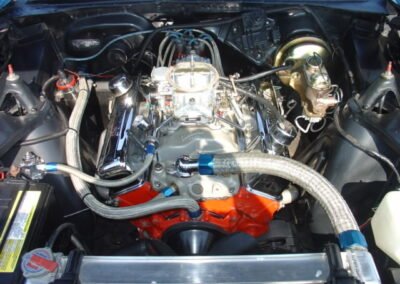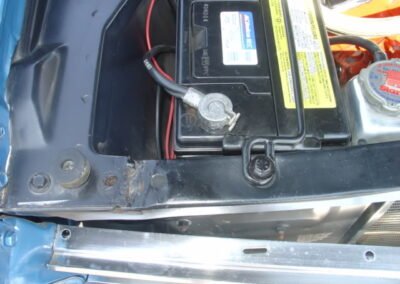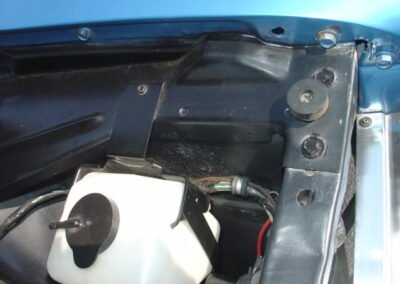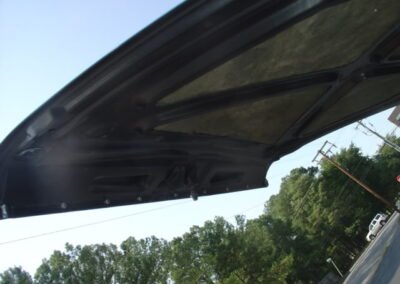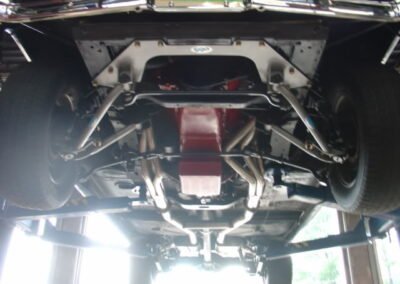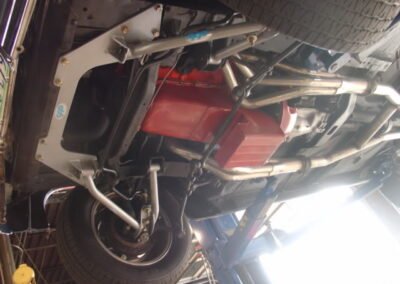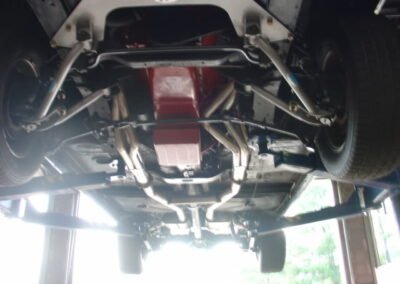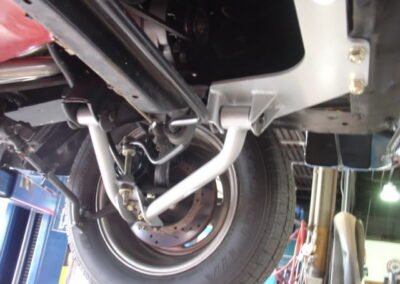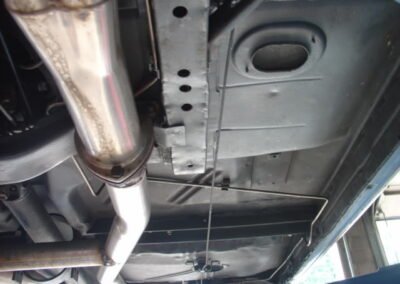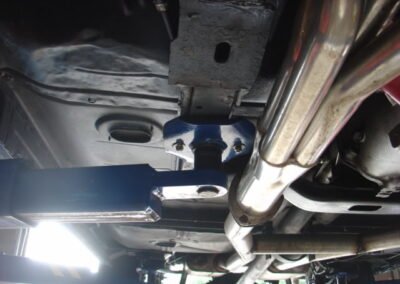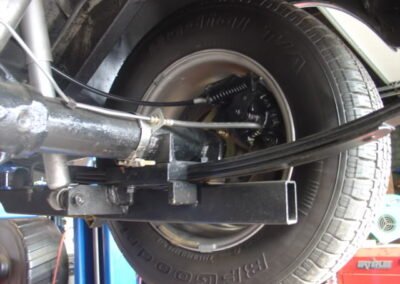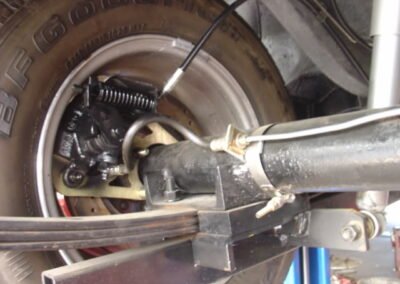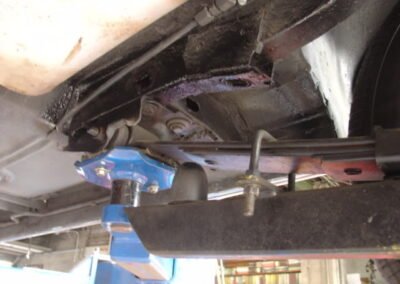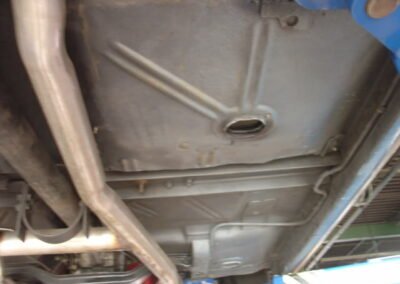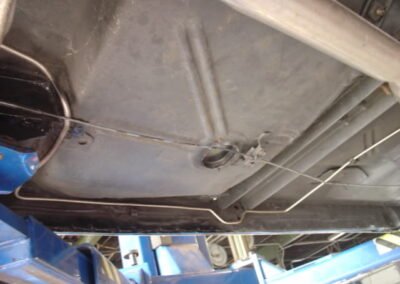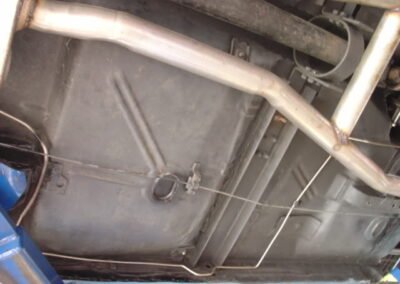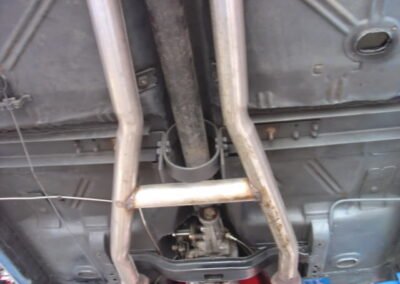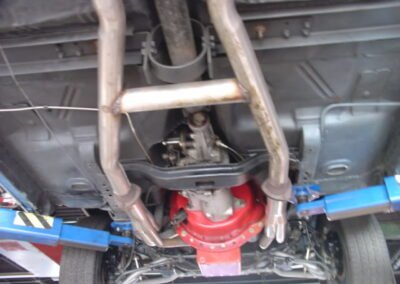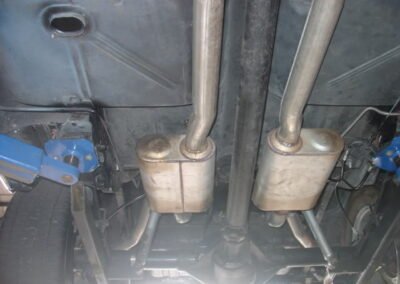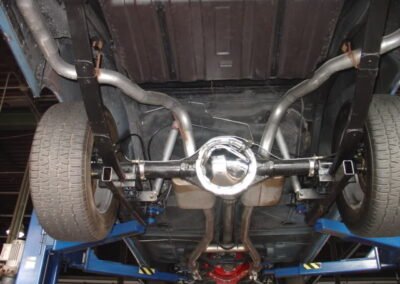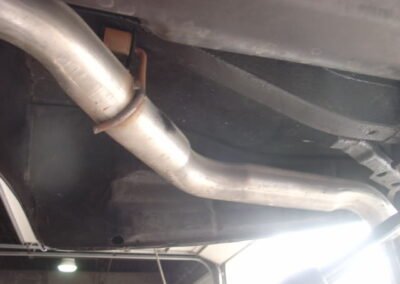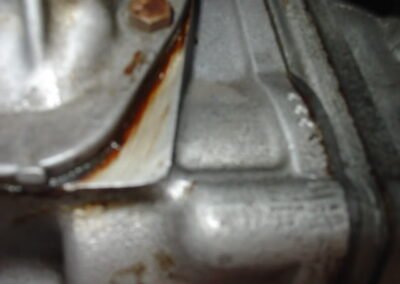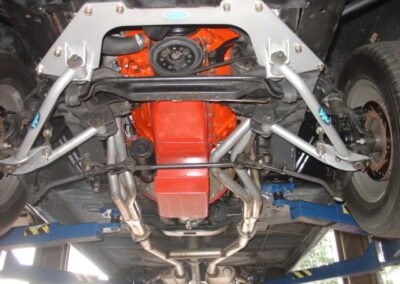1966 Chevrolet Nova II SS L79 For Sale
1966 Chevrolet Nova II SS L79 Details
1966 Chevy II Nova SS L 79 Matching Numbers 327 / 350hp L79 with 4 speed Muncie followed up by the 12 bolt rear. The real deal. Rebuilt drivetrain and restored body.
This is one beautiful, solid, and correct car. It wowed the judges at the 2007 Super Chevy show, and took Outstanding in its class!
Yes, on this documented original 70k mile real L79, the numbers in the stampings, tags, casting numbers, castings dates, etc all match up on the body cowl tag, title, VIN plate, engine, trans, and rear differential. See all of the below pics of the numbers and the decoding. I would be happy to walk anyone through these that are ready to buy the car. Decoding can be very confusing and time consuming.
This rare 1966 SS L79 is an example of the highest optioned Nova that was immediately turned into a dragstrip ready car from the dealer. Many of the L79’s were bought for this purpose. This is mostly a survivor of that time in history , but has been continually upgraded throughout time.
EXTERIOR:
Before I get into the upgrades, let me tell you the basics about the car:
The paint is beautiful and fresh. Nice enough to win a serious award at The Super Chevy Show. The body is very straight as you look down the sides. If you put a magnet on the car you will see this is an all-metal car, not a bondo car at all. The chrome and trim are in great shape. There is no evidence of any rust bubbles in the paint anywhere. The body and paint are about as flawless as you can get in a car that has been out cruising some. A very nice car. You might notice the front hood trim and small rear quarter/bumper trim pieces are in the trunk. Holes can easily be drilled and these pieces installed by the new owner, but the old owner liked the car better without them.
INTERIOR:
Much of the interior is original. It is in great shape. Not much to say. The speedo works. All of the lights work. The 2-speed windshield wipers work, though I don’t think this car has seen dew or rain since it was restored. The turn signals work. It has the original push button stereo with the optional rear antenna. The original 4-speed center console is in great shape, as well as the Hurst Shifter. The whole interior is in really nice shape. The old Stewart Warner 4 gauge cluster is really cool and rare. The oil pressure is good and high even once the car is at operating temp. on a hot day at an idle. The water temp. has been holding at 180 degrees around town even on these 95 degree days. There is an auxiliary electric fan you can switch on to help, but I really haven’t needed to switch it on. The Steward Warner amp meter works and shows the system is charging well. The last gauge is an oil temp gauge, but I don’t think it is hooked up. The dash pad is in good shape, and the gauge cluster and gauges are in great shape. The gas gauge works, the high low beams work as does the dash indicator. There is also the factory clock in the cluster. The original seat belts work. The door locks work so you can lock up the car. There is a new cd / FM radio under the dash (thank God they didn’t cut the dash) that sounds great. The windows all roll up and down, the glass is all good, and the door glass also seals up well. There are new door window felts.
DRIVEABILITY
If you wanted an L79 that could serve as a reliable daily driver, this would be a great candidate. But, you might rather baby this investment between trips to the cruise in or strip. The L79 fires right up every time. There are no funny noises in the engine. The engine sounds great and feels incredible as you wind through the gears. I pulled the valve covers (see pictures) and by looking at the insides of the engine and outside it looks like the engine has very very few miles on it since a rebuild. The 4 speed Muncie M20 transmission shifts perfectly. The transmission appears to have been rebuilt probably the same time as the engine and restoration of the car. The driveshaft looks to be original as does the starter. The positraction 12 bolt rear provides solid power to the ground. It feels and sounds good as you spin the yoke and tires to check for any funny noises with the L79 on the lift. Under power, the 12 bolt posi performs flawlessly. Because of the updated suspension and power disc brakes, the L79 feels great in corners and at high speeds. It does cruise the highway at 65mph with the 3.73 rear gear, but you can tell you don’t have a highway cruiser 3.08 gear in it for sure.
Again see below for all the decoding and pictures of important stamping and castings.
UPGRADES:
I am going to list all of the upgrades and give you my best educated “guess” to the timeline of the upgrades on the car. Again, let me say this is my best guess from my experience and research.
The car was bought to be a street strip car, with the rare SS L79 option. With a little massaging these Chevy II L79 could run 13’s in the quarter almost stock. This was very fast for the time. This L79 was turned into a dragstrip burner in ’66 with the Dealer installed Hurst Shifter and 4 pack Stewart Warner gauges. The car also soon had headers installed and a larger carburetor and intake. Also, a high volume electric fuel pump was installed in the trunk with a fuel cell. The center of the trunk floor was cut out for the fuel cell, but in the recent restoration the small fuel cell was taken out, and the trunk floor welded up with a metal sheet. Then a new stock gas tank, with a working gauge, was installed with a newer electric fuel pump. The rear leaf springs gained another leaf and were also moved inboard about 2 inches to accommodate larger tires if so desired. Traction bars were also welded on. I have mentioned how well this old school 60’s system works. The rear tires plant and the car launched straight. It also drives nice a smooth around town and on the highway. Yes, this is the real deal ‘6o’s asphalt burner.
I am guessing in 1969 the original camel hump heads were replaced with upgraded 1969 186 camel hump 2.02 heads.
There is also a scaterproof bell housing and aluminum flywheel that was also added, as well as a driveshaft loop and cross brace. As well as a large capacity oil pan.
With the restoration, an MSD ignition with rev limiter and an MSD distributor was installed. Also the weld wheels and new tires, aluminum radiator, an electric fan as well as a manual flex fan. Also, there is new Flowmaster mufflers and aluminized exhaust behind the old vintage Hooker Headers.
The last owner just installed from Classic Performance ( CPP ) front and rear power disc brake kit with dropped spindles. He also just put on the CCP Mini Subframe,Part # 6267TCA-K, which eliminates the strut rod and adds a 2 pivot lower control arm system. This makes a huge difference in the handling. The suspension and brakes take the handling and driveability if this L79 to a new era. I do have the original drum brakes and front lower suspension if you want them.
LET ME PICK THE CAR APART: I don’t want you to buy the car unless I know for certain you will be happy with it, so let me tear this car to pieces. By far here are the worse things on the car that keep it from being a fresh $200,000 restoration. There is a tiny chip the size of the tip of a pencil under the driver’s headlight. There is a little touch up on one door in the clear coat about 1/4 of an inch size you probably wouldn’t know about unless you were told. The rear trunk on the driver side bottom sticks out a little bit. I think I could just bend it in no problem, but I hate to do that to such a nice paint job if it possibly cracked. I don’t think it would though. You buy it, I will try if you like. The center of the trunk floor was replaced nicely with a sheet of metal when the fuel cell came out, instead of a “correct floor” with indentations, etc.. I would leave it because it is a piece of it’s 60’s dragstrip history, but this could easily be put back to stock. That is about it. I would be happy to pick it apart more on the phone if you like. Like it was a $250,000 resto or a 2008 new car.
Here are some of my sources: www.novasource.org, www.5speeds.com, and other GM casting and number books.
VIN: 118376W145222
1 = Chevy
18 = Chevy II Nova SS V8
37 = 2 door coupe
6 = 1966
W = Willow Run Michigan Plant
145222 = vin production sequence number, notice this is also on the engine block and rear.
1966 Nova SS L-79, 4 speed 327/350 hp with 4 speed and 12 bolt rear.
I have inspected the vin and cowl tags closely, and they both obviously have the original rivets holding them to the body, and have never been tampered with as often happens during restorations or “faking”. Check out the pictures.
COWL TAG: ( See below picture)
I will decode the tag for you, starting at top left and working across then down. You should also do your research, this is what I came up with. You should decode it yourself of course.
01D = January 4th week
E = Black interior
ST 66-11837
66 = 1966
1 = Chevy
18 = Chevy II Nova SS, V8 engine
37 = 2 door coupe
WRN = Willow Run, Michigan Plant
4224
4224 is the tracking number through production, not to be confused with a vin sequence number in 1966.
TR 765 = black bucket seats
F – F PAINT = Marina Blue Paint, both Fs b/c it is a solid color, not two toned.
2L = 2 is tinted glass and L is 4 speed trans
Remember, there were only 3,547 L79 SS Novas ever produced!
ENGINE BLOCK: Here are the engine numbers with decoding
FO108ZI 145222, these are on the front block pad on the passenger side.
F = Flint, Michigan Engine Plant
01 = January
08 = 8th day
ZI = 327 c.i., 350 horse power, L79 with manual trans
145222 = last 6 digits of the vin / vin sequence production number
362 = cast on the sides of the block underneath, these are the last 3 numbers of the block casting number which is on the driver side facing up on the rear of the engine. That number is 3791362 cast into the back of the block. It is very fun to get pictures of these rear numbers with the engine installed. This casting means it is a 62-67 327, you know what year it is by the next casting that is on the top back also, just on the passenger side.
A76 is that number!
A= January
7= 7th day of the month
6= 1966! So it is the correct block, dated correctly. ******This is very important******
The production date of the car is the end of January 1966,see above. For the car to be correct the engine casting date and the rear casting dates must be towards the beginning of January 1966. They both are. This rules out the possibilities of “faked” stampings. The great thing is that it all adds up on this car. Not many so called matching cars do with this close scrutiny.
TRANSMISSION: Here are the decoding numbers.
stamped 6W 145222 = last 6 digits of the vin. On the passenger side.
P09125A on the drivers side. This number is not supposed to relate to the dating of production and castings as the engine and rear do b/c the trans is made at the Muncie Plant. P= Muncie
09= September
15= 15th day
A= M20 4 speed wide ratio
3885010 cast on the pass side= a case for 1965-1967 1 inch bore 4 speed Muncie M20, M21, or M22
38575846M on pass. tailshaft =
3857584= 66-70 pass. side speedo, 27 spline
6= 1966
M= Muncie
REAR DIFFERENTIAL
3852980N on the housing = 65-67 Nova
A126 on the housing
A= Jan
12= 12th day
6= 1966
So this is a 1966 Nova rear produced a couple weeks before the production date of the car (on the cowl). Which matches it all up.


